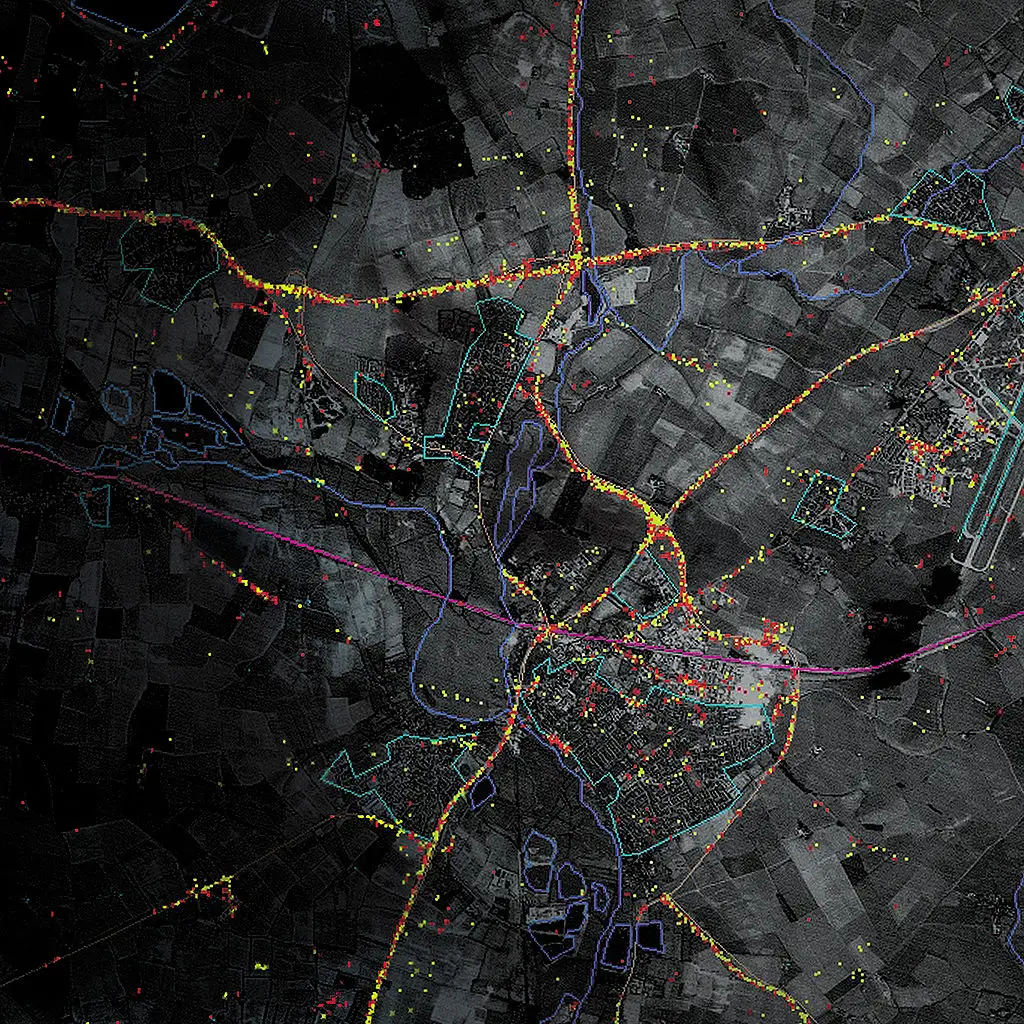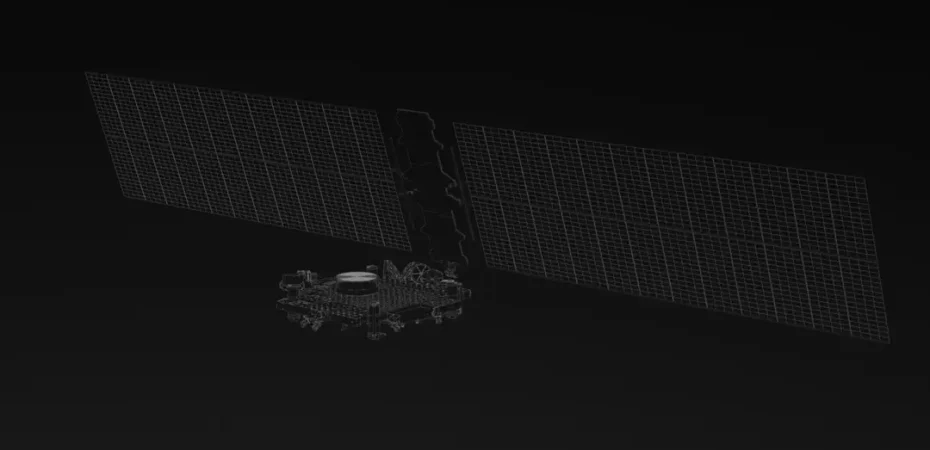According to a Reuters article published in March 2024, the National Reconnaissance Office (NRO) has publicly announced that SpaceX has been awarded a new $1.8 billion contract to build and deploy a powerful new spy system with hundreds of satellites. This new constellation will provide state of the art Earth-imaging capabilities with the ability to work collaboratively as a swarm. Details on the exact mission profile and capabilities remained scarce at the time of the initial announcement, but details surrounding other admissions from the NRO in the same time frame seem to indicate that the newest (acknowledged) SpaceX/NRO collaboration aims to develop a cutting edge constellation that would provide near real-time Ground Moving Target Indicator (GTMI) from space.

Source: DARPA
The goal of having real-time, continuous monitoring and tracking information being shared to battlefield commanders has been a long sought after goal of the US Military. Previous space-based platforms struggled with the same limitations that have plagued space-based reconnaissance since the dawn of its inception, namely, their inability to be at all places at once coupled with their predictability and the cumbersome speed at which they can be retasked. A large, distributed constellation would be able to provide round-the-clock coverage of key targets across nearly the entire Earth.
Risks Associated with Real-Time Persistent Communications
Deploying this system will obviously present a major challenge in the realm of cybersecurity. Real-time, continuous GTMI from space assets will involve persistent ground-to-ground, ground-to-space and potentially multiple space-to-space datalinks. This vulnerability will be apparent from the get-go and our adversaries will likely expend significant resources on disrupting the very communication links that could make this system so effective. Luckily, the engineers at SpaceX have already been at the forefront of the latest advancements in laser communications thanks to the Starlink constellation. Laser communications have been shown to be capable of transferring large amounts of information very quickly, and is inherently more secure and jam-resistant. On their Starshield website, SpaceX claims that “Starlink already offers unparalleled end-to-end user data encryption. Starshield uses additional high-assurance cryptographic capability to host classified payloads and process data securely, meeting the most demanding government requirements.” Similarly, in May of 2023 NASA publicly announced that it had demonstrated a 200 gigabit per second throughput on a space-to-ground optical link, the highest ever rate achieved by optical communications technology.
While most of the technical details surrounding SpaceX’s newest constellation remain hidden, it is safe to assume that this new constellation will take advantage of and build on the latest advancements in laser satellite communications. As this technology matures, security and resiliency must remain paramount.
Implications and Considerations
We all know that what is perceived to be the safest and most secure methods of digital communication today, will ultimately find itself vulnerable and under attack in the years ahead. GTMI via space assets has the potential to be a major game-changer for the warfighter and the men and women leading them on the battlefield. The exact methodology of how this new avalanche of target information could and would be used by battlefield commanders remains unclear. Round-the-clock GTMI could provide the holy grail of strategic surveillance, providing continuous updates on the position and readiness of our adversary’s most formidable weapons systems. As the technology matures, there is also no reason why real-time targeting information couldn’t be passed to long-range weapons systems mid-flight; providing updated state information on moving targets and giving the US Military not just ‘over-the-horizon’ capability, but ‘around-the-world’ capability.
Developing and surrounding military doctrine based on cutting edge systems is something that the US Military excels at. Their are numerous examples, from precision guided munitions to stealth, that demonstrate how yesterday’s most advanced capabilities proliferate en masse on to follow-on systems. If GTMI becomes the game-changer that it has the potential to be, we could see a new generation of assets that are built around and reliant on stable, secure communications with space assets and their ground systems. If the war in Ukraine has taught us one thing, it is that even some of our latest and most advanced generation of precision munitions and unmanned vehicles face serious technical challenges when operating in a GPS-denied environment. Developing the next generation of weapons and surveillance systems using real-time space-based GTMI must learn from our mistakes.
Author: Michael McGivern
Sources:
- Reuters: Exclusive: Musk’s SpaceX is building spy satellite network for US intelligence agency, sources say
- Reuters: SpaceX to sell satellite laser links that speed in-space communication to rivals
- The Warzone: If SpaceX’s Secret Constellation Is What We Think It Is, It’s Game Changing
- The Warzone: DARPA Wants Cheap Laser Communications Terminals To Allow Any Satellite To Talk To Another
- SpaceX: Starshield: Supporting National Security
- NASA: NASA, Partners Achieve Fastest Space-to-Ground Laser Comms Link
